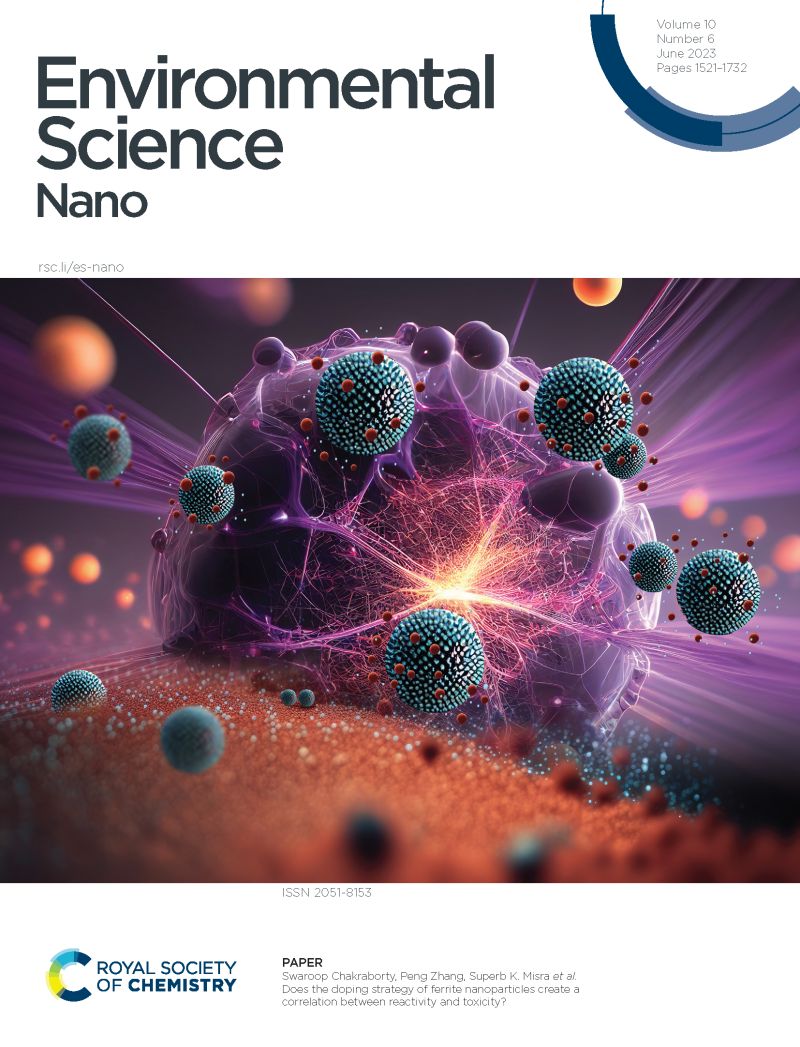Assessment of the Toxicity of Bio-Synthesized Silver Nanoparticles on Oreochromis niloticus (nile tilapia)
IF 5.8
2区 环境科学与生态学
Q1 CHEMISTRY, MULTIDISCIPLINARY
引用次数: 0
Abstract
Silver nanoparticles (AgNPs) have garnered significant attention due to their antimicrobial properties. However, their potential environmental impact remains a concern. This study evaluates the acute toxicity and physiological effects of biogenic AgNPs synthesized using Aspergillus tubingensis (AgNP-AT) on Oreochromis niloticus (Nile tilapia), a widely used bioindicator species. AgNP-AT were characterized using UV-Vis spectrophotometry (SPR peak at 420 nm), dynamic light scattering (DLS; 48±5 nm), and transmission electron microscopy (TEM; 35±10 nm). The 96-hours median lethal concentrations (LC50) for AgNP-AT was determined as 8.8 μM, whereas AgNO3 exhibited a significantly lower LC50 of 0.028 μM, indicating its higher toxicity. Exposure to AgNP-AT at 30, 35, and 40 μM resulted in a significant increase in oxygen consumption (from 0.2 to 0.4 mL O2/g/L/h) without affecting ammonia excretion. Swimming activity was reduced in a concentration-dependent manner, with fish exposed to 40 μM showing the most pronounced impairment. Histopathological analysis revealed a reduction in lamellar length (50% decrease) and an increase in lamellar width (60% increase), demonstrating structural alterations in the gills. These findings show that AgNP-AT, although less toxic than AgNO3, still induces physiological and morphological effects in Nile tilapia. This study provides valuable data for assessing the environmental risks of biogenic AgNPs and contributes to the development of safer nanotechnology applications.求助全文
约1分钟内获得全文
求助全文
来源期刊

Environmental Science: Nano
CHEMISTRY, MULTIDISCIPLINARY-ENVIRONMENTAL SCIENCES
CiteScore
12.20
自引率
5.50%
发文量
290
审稿时长
2.1 months
期刊介绍:
Environmental Science: Nano serves as a comprehensive and high-impact peer-reviewed source of information on the design and demonstration of engineered nanomaterials for environment-based applications. It also covers the interactions between engineered, natural, and incidental nanomaterials with biological and environmental systems. This scope includes, but is not limited to, the following topic areas:
Novel nanomaterial-based applications for water, air, soil, food, and energy sustainability
Nanomaterial interactions with biological systems and nanotoxicology
Environmental fate, reactivity, and transformations of nanoscale materials
Nanoscale processes in the environment
Sustainable nanotechnology including rational nanomaterial design, life cycle assessment, risk/benefit analysis
 求助内容:
求助内容: 应助结果提醒方式:
应助结果提醒方式:


